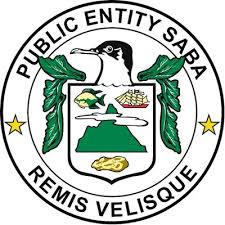A Journey of Survival and Hope in the Caribbean
- Emily

- Aug 30, 2024
- 4 min read
Updated: May 21
Sea Turtle Nesting in the Caribbean: Why Saba’s Waters Still Matter, Even Without Sandy Beaches
The Caribbean is a paradise known for its crystal clear waters, vibrant coral reefs, and diverse marine life. Among its most enchanting natural phenomena is the nesting season of sea turtles. Every year, these adult turtles return to the beaches where they were born (called natal homing for those in the know), embarking on an extraordinary journey to lay their eggs. This annual event is not only a wonder of nature, but also a vital process for the survival of endangered species.

Sea turtles are remarkable travelers, often covering thousands of miles across oceans to reach their nesting grounds in the Caribbean. Some species can live to be over 50 years old and have an innate ability to navigate vast distances with incredible precision. Scientists believe they use the Earth's magnetic field as a guide, returning to the exact beaches where they hatched decades earlier. The most common species that nest in the Caribbean include the leatherback, green, hawksbill, and loggerhead turtles.

Once a female turtle arrives on her natal beach, she begins the laborious process of nesting. Under the cover of night, she hauls her body ashore, seeking a quiet, undisturbed spot above the high-tide line. Using her flippers, she digs a deep pit in the sand where she will deposit her eggs. A single nest can contain anywhere from 50 to over 200 eggs, depending on the species!
The act of laying eggs is a deeply vulnerable time for the turtle. Exhausted from her journey and the effort of digging, she is exposed to potential threats, both natural and human-made. After laying her eggs, she carefully covers the nest with sand to protect it from predators and the harsh sun. The mama turtle then makes her way back to the ocean, leaving her offspring to develop and hatch on their own.
The incubation period for turtle eggs varies between species, typically lasting around 60 days. During this time, the temperature of the sand plays a crucial role in determining the sex of the hatchlings—warmer temperatures tend to produce females, while cooler temperatures produce males (Remember: hot chicks and cool dudes).

When the time comes, the hatchlings emerge from their shells and begin their perilous journey to the sea. This is a critical and dangerous phase as they must navigate a gauntlet of predators, including birds, crabs, and fish, while avoiding disorientation caused by artificial lights from nearby developments. Those that make it to the ocean are not safe yet—only one in 1,000 hatchlings is estimated to reach adulthood.
The nesting process of sea turtles is a fragile one, and these majestic creatures face numerous threats that have led to a decline in their populations. Habitat loss due to coastal development, climate change, poaching, and pollution all pose significant challenges to their survival.

Thankfully, conservation efforts across the Caribbean are making a difference! Many countries have established protected areas and implemented regulations to safeguard nesting beaches. Volunteers and conservationists work tirelessly during nesting season to monitor beaches, relocate nests threatened by erosion or human activity, and educate the public about the importance of turtle conservation, including SLF's own Emily!
One of the most successful strategies has been the reduction of artificial lighting near nesting sites, which helps prevent hatchling disorientation. In addition, eco-tourism initiatives have been developed, where visitors can witness the nesting process under the guidance of trained professionals, ensuring that human presence does not disturb the turtles.
The sight of a mother turtle laying her eggs on a moonlit beach, and the subsequent emergence of tiny hatchlings racing toward the sea, is a powerful reminder of the delicate balance of nature. The nesting turtles of the Caribbean represent not only the beauty and resilience of marine life but also the hope that through collective effort, we can ensure their survival for generations to come.

What about Saba? Does no beaches = no turtles? Absolutely not! While Saba has witnessed a few nesting attempts at Cove Bay, the island's lack of sandy beaches (Fun fact: Saba officially has 20 beaches*, but they are cobble beaches, not the white sand kind), and the breakwater at Cove Bay make Saba less ideal for nesting. However, many scientists believe Saba's decades of marine protection make the island a key contributor to regional turtle health as a teenager safe zone--a place to chill until they are old enough to reproduce and move on. As any diver can tell you, Saba's waters are teeming with turtles! However, our neighboring islands of Statia, St. Maarten, Anguilla, St. Barths and St. Kitts do have (real) beaches with annual nesting seasons. One of the scientists coming for Sea & Learn this year focuses on sea turtle health. Dr. Kimberly Stewart is the Executive Director of the Wider Caribbean Sea Turtle Conservation Network (WIDECAST; the Founder and Director of the St. Kitts Sea Turtle Monitoring Network (SKSTMN); and an Associate Professor of Exotic and Avian Medicine at Ross University School of Veterinary Medicine (RUSVM) in St. Kitts. She will also travel with the SLF team to Statia for a mini-version of our program--because sharing (knowledge and resources) is caring! Her field project will teach all of us how we can document Saba's turtles to help solve the puzzle of where turtles are from and where they like to hang out along the way. Fin, noggin, duuude! ;)
To read more about Kimberly and other experts coming to Saba this October, visit https://www.seaandlearn.org/2024-experts. Or better yet, join us on Saba (or Statia) to learn from this turtley awesome expert in person!
*Dr. Jennifer Rahn is a geomorphologist out of Samford University who has studied Saba's coastline for more than 30 years. As a many-time Sea & Learn presenter, she explained to our audiences the true definition of a beach and how beaches around the world differ.








Comments